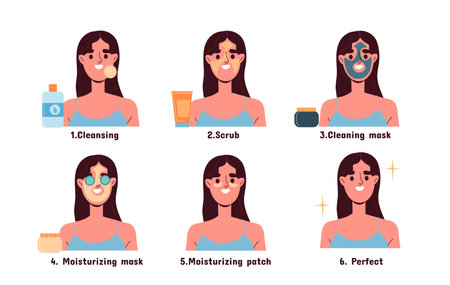Understanding Laser Treatments for Vascular Conditions
Laser therapies have revolutionised the way we address vascular concerns, providing an effective and minimally invasive solution for a range of issues from spider veins to port-wine stains. At its core, laser treatment works by delivering concentrated beams of light that target abnormal blood vessels beneath the skin, causing them to fade without harming surrounding tissue. In the UK, where patient safety is always the top priority, these treatments are carried out with meticulous care and state-of-the-art technology. Commonly treated conditions include facial thread veins, rosacea, and other visible vascular irregularities that can impact both confidence and quality of life. With strict healthcare regulations and a strong culture of informed consent, British clinics place immense importance on minimising risk and ensuring each client’s wellbeing throughout the process. This commitment to safety is not just a guideline—it’s woven into every aspect of the patient journey, from consultation through to aftercare.
2. Identifying Qualified Practitioners and Reputable Clinics
If you’re considering laser treatments for vascular conditions, one of the most crucial steps to ensure your safety is choosing a certified practitioner and a reputable clinic. In the UK, practitioners performing aesthetic procedures such as laser treatments should be regulated by recognised authorities. This not only safeguards your health but also minimises the risk of unwanted side effects or complications. Here’s how to make an informed choice with confidence.
Why Certification Matters
Certified practitioners have undergone rigorous training and adhere to strict safety standards set by UK governing bodies like the Care Quality Commission (CQC) or the General Medical Council (GMC). Ensuring your practitioner is registered provides peace of mind that they are competent, ethical, and up-to-date with the latest protocols in laser safety.
Checklist: What to Look For
| What to Check | Details | Why It’s Important |
|---|---|---|
| Registration | CQC or GMC registration number displayed | Verifies legitimacy and compliance with UK regulations |
| Experience | Years practising laser treatments for vascular conditions | More experience often equals greater expertise and safer outcomes |
| Insurance | Professional indemnity insurance coverage | Protects you in case of unexpected complications or errors |
| Consultation Process | Thorough initial assessment and clear explanation of risks/benefits | Ensures your treatment plan is personalised and safe for you specifically |
| Equipment Standards | Use of CE-marked, well-maintained laser devices | Reduces risk of burns, scars, or ineffective results due to faulty machinery |
| Aftercare Support | Clear aftercare instructions and emergency contact availability | Aids in swift recovery and prompt response if side effects arise |
How to Spot a Trustworthy Clinic in Your Area
- Word of Mouth: Ask friends, family, or local GPs for recommendations based on real experiences.
- Online Reviews: Look for consistently positive feedback on trusted UK platforms like Trustpilot or NHS Choices.
- CQC Ratings: Search the Care Quality Commission website for up-to-date ratings and inspection reports.
- Transparent Pricing: Reputable clinics provide clear pricing without hidden fees—an indicator of honesty and professionalism.
- No Pressure Sales: Ethical practitioners never rush you into treatment; they give you time to consider your options.
- Cultural Understanding: In diverse areas like London or Manchester, clinics sensitive to different skin types and cultural needs are invaluable.
Your Experience Matters Most
I’ve personally found that taking the time to research clinics pays off—not just in terms of physical results but also in how comfortable and cared-for you feel throughout the process. When you walk into a clean, welcoming clinic where staff take your concerns seriously, it sets the tone for a safer, more satisfying journey towards healthier skin. Always remember: when it comes to laser treatments for vascular conditions in the UK, safety truly comes first.

3. Personal Consultation: Assessing Candidacy and Setting Expectations
Before embarking on any laser treatment for vascular conditions, the cornerstone of safety lies in a thorough and bespoke consultation. Here in the UK, we value an open and honest approach—there’s no room for stiff upper lips when it comes to your health. A reputable clinic will always prioritise getting to know you as an individual, not just another name on the books.
During your initial appointment, you should expect your practitioner to delve into your medical history with genuine care. This isn’t just a tick-box exercise; it’s about understanding any underlying conditions, allergies, or past treatments that might influence your response to laser therapy. A transparent conversation allows both you and your clinician to weigh up the potential benefits against any specific risks—tailoring the treatment plan to fit you perfectly.
What I’ve found most reassuring is the British emphasis on setting realistic expectations from the outset. Rather than promising miraculous overnight results, practitioners here take pride in providing clear, honest guidance about what can be achieved—and what can’t. This means discussing possible side effects, anticipated downtime, and how many sessions may be needed for optimal outcomes.
Ultimately, a personalised consultation is more than just a formality; it’s an essential safeguard that empowers you to make informed decisions about your care. By fostering an atmosphere of trust and transparency, British clinics ensure that safety always comes first—helping you feel confident and understood every step of the way.
4. Treatment Protocols: Ensuring Best Practice and Safety
When considering laser treatments for vascular conditions, UK clinics take safety protocols seriously, blending clinical expertise with a reassuring, patient-focused approach. Each step is designed to minimise risks and side effects, while ensuring your comfort remains paramount throughout the process.
Adhering to UK-Approved Protocols
Clinics across the UK strictly follow guidelines set by healthcare regulators such as the Care Quality Commission (CQC) and National Institute for Health and Care Excellence (NICE). These guidelines not only dictate how treatments should be performed but also ensure that practitioners are fully qualified and trained. This commitment means you can expect a consistently high standard of care, whether youre in London or Liverpool.
Stringent Hygiene Standards
Your wellbeing is at the heart of every reputable clinic’s protocol. Rigorous hygiene standards are non-negotiable – treatment rooms, laser devices, and all equipment are thoroughly sanitised between patients. Staff wear appropriate protective gear and maintain a sterile environment to prevent infections or complications. It’s these small but vital details that build trust and offer peace of mind.
Tailored Laser Settings for Your Comfort
No two people are alike, so treatments are never one-size-fits-all. During your initial consultation, practitioners assess your skin type, medical history, and the nature of your vascular concern. This allows them to customise laser settings – including wavelength, pulse duration, and energy level – for both efficacy and minimal discomfort. It’s a thoughtful process that respects your individuality while striving for the best possible results.
Key Aspects of UK Laser Treatment Protocols
| Protocol Aspect | UK Standard Practice | Benefit for You |
|---|---|---|
| Practitioner Qualifications | CQC/NICE certified professionals | Safe hands and expert care |
| Hygiene Measures | Strict sterilisation & PPE use | Lower infection risk, peace of mind |
| Treatment Customisation | Individually tailored settings | Greater comfort & reduced side effects |
| Aftercare Advice | Bespoke post-treatment support | Smoother recovery & optimal results |
Your Experience Matters Most
The blend of technical excellence and compassionate care found in UK clinics ensures you’re never just a number. Every step is about supporting you—physically and emotionally—so you feel informed, safe, and confident on your journey to healthier skin.
5. Managing and Minimising Side Effects
A Guide to Common Short-Term Side Effects
After undergoing laser treatments for vascular conditions, it’s quite normal to experience some mild side effects. Most commonly, you might notice redness, slight swelling, or a sensation similar to sunburn in the treated area. Occasionally, minor bruising or temporary skin discolouration can also occur. These reactions are generally short-lived and resolve within a few days as your skin begins its natural healing process. British dermatologists often reassure patients that these symptoms are expected, but understanding what is typical versus unusual is key to a worry-free recovery.
Aftercare Recommendations
Proper aftercare is essential to minimise discomfort and reduce risks of complications. The NHS and UK skincare professionals recommend keeping the treated area clean and gently patting it dry after washing—never rubbing or using harsh products. Applying a cold compress can soothe any immediate warmth or tenderness. It’s vital to avoid direct sunlight; use a broad-spectrum sunscreen (SPF 30 or higher) even on cloudy days, as British weather is famously unpredictable. Refrain from hot baths, saunas, or vigorous exercise for at least 48 hours post-treatment, as heat can exacerbate swelling. Most importantly, follow your practitioner’s bespoke instructions closely—they are tailored for your unique skin type and condition.
When to Seek Professional Advice
While most side effects are mild and temporary, there are certain signs that warrant prompt medical attention. If you notice persistent blistering, intense pain, spreading redness, pus, or symptoms suggestive of infection (such as fever), contact your clinic or GP without delay. According to UK guidelines, early intervention ensures optimal healing and minimises the risk of scarring or other long-term issues. Your safety is paramount—never hesitate to seek reassurance if something feels amiss during your recovery journey.
6. Your Rights and Support in the UK System
When it comes to laser treatments for vascular conditions, prioritising your safety isn’t just about choosing the right clinic or understanding the risks—it’s also about knowing your rights as a patient within the UK healthcare system. The UK offers a robust framework to ensure that individuals undergoing any medical procedure, including laser treatments, are protected, respected, and heard if things don’t go quite as planned.
Understanding Your Patient Rights
In the UK, you have clear and established rights under the NHS Constitution. Whether you’re receiving treatment privately or through the NHS, you have the right to be fully informed about your procedure—including potential side effects and risks. You’re entitled to ask questions, request a second opinion, and receive information in a way that is easy to understand. If at any stage you feel unsure or pressured, remember that consent must always be freely given and can be withdrawn at any time.
What To Do If You Have Concerns
If you experience unexpected side effects or complications after your laser treatment, speak with your practitioner first—they should listen carefully and provide guidance on next steps. If you’re not satisfied with their response, you can escalate your concerns. For treatments carried out within the NHS, there’s a formal complaints process where you can raise issues confidentially. Private clinics are also regulated and must have their own transparent complaints procedures.
The Role of the NHS and Local Support Systems
The NHS is committed to patient safety and continuous improvement. If you feel that your care has fallen short of expected standards, organisations like the Care Quality Commission (CQC) oversee both NHS and private clinics to ensure safe practices are maintained. Local Patient Advice and Liaison Services (PALS) offer support and advice—acting as advocates if you need help navigating the complaints process or understanding your options.
Finding Community and Emotional Support
Sometimes what’s needed most is emotional reassurance after an unexpected outcome. The UK is home to various patient support groups—both local and national—that offer a space to share experiences, gather information, and find comfort from others who have undergone similar treatments. Never hesitate to reach out; support is part of holistic healing.
Ultimately, knowing your rights and being aware of the support available ensures that your journey towards healthier skin remains empowering—even if challenges arise along the way. In my experience, feeling supported by both professionals and peers made all the difference in regaining confidence after treatment setbacks.

